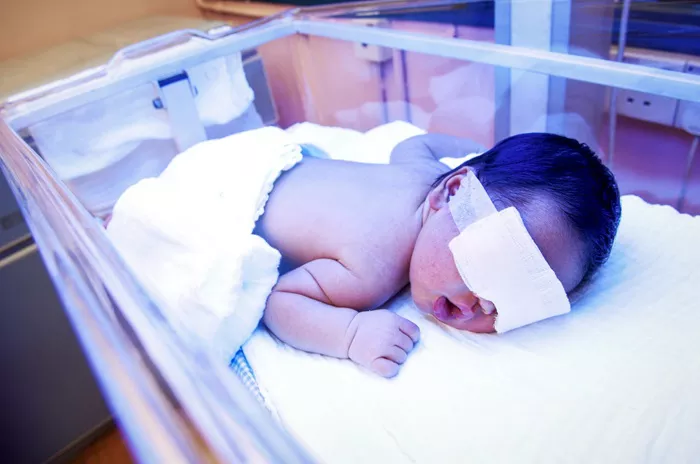Bilirubin is a yellow substance produced during the normal breakdown of red blood cells. Newborns often have high levels of bilirubin, leading to a condition known as jaundice. Jaundice is characterized by yellowing of the skin and eyes. While common and usually harmless, high bilirubin levels can sometimes indicate a more serious condition that needs medical attention.
Causes of High Bilirubin in Newborns
High bilirubin levels in newborns can result from several factors. These include:
Physiological Jaundice:
This is the most common type and occurs because newborns have more red blood cells than adults, which are broken down faster. Their liver is also immature and less efficient at processing bilirubin.
Breastfeeding Jaundice:
Some breastfed babies may develop jaundice if they do not get enough breast milk, leading to dehydration and decreased bilirubin elimination.
Breast Milk Jaundice:
Certain substances in breast milk can interfere with the liver’s ability to process bilirubin. This type usually appears after the first week of life.
Blood Group Incompatibility:
If a newborn’s blood type is incompatible with the mother’s, the baby’s red blood cells can be destroyed faster, increasing bilirubin production.
Infections:
Infections can increase bilirubin levels by causing the breakdown of red blood cells or impairing liver function.
Genetic Conditions:
Some genetic disorders can affect the breakdown of red blood cells or the processing of bilirubin.
SEE ALSO: What is a Good Bilirubin Level for Newborns?
Symptoms of High Bilirubin Levels
High bilirubin levels in newborns are primarily indicated by jaundice. Symptoms include:
Yellowing of the Skin and Eyes:
The yellowing typically starts on the face and spreads to the chest, abdomen, arms, and legs as bilirubin levels rise.
Poor Feeding:
Babies with high bilirubin may be lethargic and have difficulty feeding.
Dark Urine:
While newborn urine is usually colorless, dark urine can indicate high bilirubin levels.
Pale Stools:
Pale or chalky stools can also be a sign of high bilirubin levels.
Diagnosis of High Bilirubin Levels
Doctors diagnose high bilirubin levels through physical examination and tests:
Visual Assessment:
A doctor will examine the baby’s skin and eyes for signs of jaundice.
Bilirubin Meter:
A device placed on the skin can measure bilirubin levels non-invasively.
Blood Tests:
A blood test can measure the total bilirubin level and differentiate between direct and indirect bilirubin.
Treatment of High Bilirubin Levels
Treatment depends on the severity of jaundice and the underlying cause:
Phototherapy:
The most common treatment involves exposing the baby to a special type of light that helps break down bilirubin in the skin.
Exchange Transfusion:
In severe cases, the baby’s blood may be replaced with donor blood to quickly reduce bilirubin levels.
Intravenous Immunoglobulin (IVIg):
For blood group incompatibility, IVIg can reduce the need for exchange transfusions.
Enhanced Feeding:
Increasing the frequency of feeding can help promote bilirubin elimination through urine and stools.
Treating Underlying Conditions:
If an infection or other condition is causing high bilirubin levels, treating that condition is crucial.
Prevention of High Bilirubin Levels
While not all cases of high bilirubin can be prevented, certain measures can reduce the risk:
Adequate Feeding:
Ensuring the baby is feeding well, especially in the first few days of life, can help reduce the risk of jaundice.
Monitoring:
Babies at risk of high bilirubin levels, such as those with blood group incompatibility, should be closely monitored.
Early Detection:
Early detection and treatment of jaundice can prevent complications.
Complications of Untreated High Bilirubin Levels
If left untreated, high bilirubin levels can lead to serious complications, including:
Kernicterus:
This is a type of brain damage caused by very high levels of bilirubin. It can lead to permanent neurological damage, hearing loss, and intellectual disabilities.
Acute Bilirubin Encephalopathy:
This is an early stage of kernicterus where the baby may be very lethargic, have a high-pitched cry, and show signs of poor feeding and muscle tone changes.
When to Seek Medical Attention
Parents should seek medical attention if their baby shows signs of jaundice, especially if:
Jaundice Appears in the First 24 Hours: This could indicate a more serious underlying condition.
Jaundice Worsens: If the jaundice spreads to the arms and legs or becomes more intense.
Poor Feeding or Lethargy: If the baby is difficult to wake or refuses to feed.
High-Pitched Cry or Arching Back: These are signs of severe jaundice and potential brain involvement.
Conclusion
High bilirubin levels in newborns, while common, require careful monitoring and management. Early detection and treatment are essential to prevent complications. Parents should be aware of the signs of jaundice and seek medical advice if they have concerns. With proper care, most babies with high bilirubin levels recover without any long-term issues.


